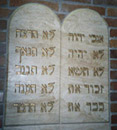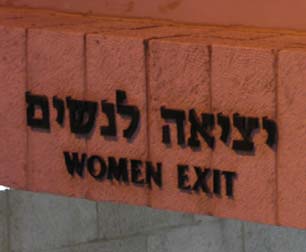17.2 2
עוד שיר: דולי לי
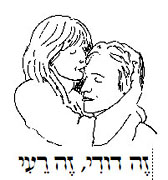
The text of this song is based on the biblical Song of Songs (Chapter 2:16; 4:9; 4:16). Practice reading it aloud, until you can read fluently. Listen to the song and sing along! Use your Hebrew accent!
100.00 %
| דוֹדִי לִי | ||
|---|---|---|
| My beloved is mine and I am his | דוֹדִי לִי וַאֲנִי לוֹ | |
| Who browses among the lilies | הָרוֹעֶה בַּשוֹשָנִים | |
| Who is she that comes up from the desert? | מִי זׂאת עוֹלָה מִן הַמִדְבָּר | |
| (with) clouds of myrrh and frankencense | מְקֻטֶרֶת מוֹר וּלְבוֹנָה | |
| you have captured my heart, my dearest, my bride. | לִבַּבְתִּנִי אֲחוֹתִי כַּלָה | |
| Awake O north wind, Come O south wind | עוּרִי צָפוֹן וּבוֹאִי תֵּימָן | |
|
2.18 עבודה בִקְבוּצות - GROUP WORK Read the following words. To prepare, put a זכר - ז or a נקבה - נ after each word. If a verb is a form that can be both זכר and נקבה put both a נ and a ז
100.00 %
2.19
שְמות עֶצֶם: יחיד
:
Use with the Software Chapter 2:11
Changing Singular Nouns to Plural and Chapter 2:12 Changing
Plural Nouns to Singular Focus on the Singular:
113
Warning! Plural endings of nouns don't indicate gender
reliably. Adjectives are totally consistent, however. They faithfully reflect the grammatical gender of the noun they describe.
Conclusion:
2.19.1
דיקְדוּק: מין זכר או מין נְקֵבה
100.00 %
| אישה
| איש
| סֵפֶר
| מֶטֶר
|
1. מקום
אמא
הורים
דוד
דודה
2. אדם
מחְבֶּרֶת
יְחידה
בֵית-סֵפֶר
תלְמידה
3. עיפּרון
שיר
עִברית
לוּחַ
אבא
4. מפּה
סְטוּדֶנט
מישְפּחה
מיכְתב
שֵם
5. שירון
שבּת
קיבּוּץ
ספּה
עמוּד
6. כיתה
סְטוּדֶנטית
מיץ
סוף
7. התְחלה
שבוּעַ
כלה
עולם
8. עיר
אוּניבֶרְסיטה
9. בוקֶר
100.00 %
עיפרון - מין זכר
מין נקֵבה
הוּא כתב בְּעיפרון חדש. 110 | ||||||||||||||||||||||||||||||||||||||||||||||||||||||||||||||||||||||||||||||||||||||||||||||||||||||||||||||||
Numbers Have Gender Too
...The numbers you have learned so far are feminine in gender. Feminine
numbers are used for counting whenever an item (noun) is not actually mentioned.
(They are shorter so it is quicker to count with them.) As you have learned,
when telling time you use the feminine numbers.
However, when the item (noun) has been mentioned, the gender
of the number should correspond with that of the noun it modifies. For example:
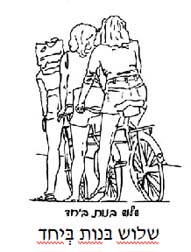 שְלושה
תלְמידים שלוש תלְמידות
שְלושה
תלְמידים שלוש תלְמידות (However it is common to hear
Israelis only using feminine numbers!)
Numbers: One Through Five אחת עד חמֵש - 2.20.1
Read aloud and note the differences between the masculine and feminine numbers.
| זכר | נְקֵבה | |
|---|---|---|
| one | אֶחָד | אַחַת |
| two | שְנַיִים | שְתַּיִיַם |
| three | שְלוֹשָה | שָלוֹש |
| four | אַרְבָּעָה | אַרְבַּע |
| five | חֲמִישָה | חָמֵש |
The Number Two שְתיים, שניים - 2.20.2
There are special forms for the number "two" when it is followed by a noun
| זכר | נְקֵבה | |||
|---|---|---|---|---|
| two letters | שְנֵי מיכְתבים | two classes | שְתֵי כּיתות |
When not followed by a noun use שְתַיִים, שְנַיִים
For example:
כּמה ספרים יֵש? שניים. כּמה תלמידות יֵש? שתייםIsraelis often are required to show the contents of their bag or briefcase. Let's imagine the following exchange.

| סְליחה, גְבֶרֶת. מה יֵש לךְ בַתיק? | הוּא: |
| יֵש לי שְלוֹשה סְפרים, שְנֵי עֶפְרונות, וּמחְבֶּרֶת אחת. |
היא: |
111
2.20.3
שְׁמות עֶצֶם
In this exercise first decide if the noun is masculine or feminine Then choose the correct number. We will only use numbers one and two.
❗ The number “One” follows the noun -- All other numbers precede the noun.
100.00 %
מיכְתב
אֶחד
one letter שְנֵי מיכְתבים
two letters
See if you can add the numbers one and two to these nouns
סְסוּדֶנְט סְטוּדֶנְיטים עֵט עֵטים קְבוּצה קְבוּצות מישְפּחה מישְפּחות
לוּחַ לוּחות עיפּרון עֶפְרונות מילה מילים
| שני או שתי? | אחד או אחת? |
| 2 סְטוּדֶנְיים | 1 סְטוּדֶנְט |
| 2 עֵטים | עֵט 1 |
| 2 קְבוּצות | קְבוּצה 1 |
| 2 מישְפּחות | מישְפּחה 1 |
| 2 לוּחות | לוּחַ 1 |
| 2 עֶפְרונות | עיפּרון 1 |
| 2 מילים | מילה 1 |
100.00 %
Read the following
| שלום נעמה, כמה מיכְתבים יֵש לָךְ? | יואב: |
| יֵש לי מיכְתב אֶחד. מיכְתב מִדודה דְבורה. כמה מיכְתבים יֵש לְךָ? |
נעמה: |
| יֵש לי שְנֵי מיכְתבים, אֶחד מִדוד שְמוּאֵל וְאֶחד מֵההורים שֶלי. |
יואב: |
2.21
אֵיךְ לִקְרוא
:
Use with the Software Chapter 2:14
"A Letter from Uncle Avner"
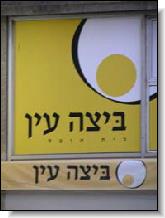

Developing Reading Strategies
Reading strategies are important in becoming a skillful reader
in any language. Here are some hints.
1. Your first task is to determine the context. Ask yourself:
What is the topic of the text? Is the text a
menu? A bus schedule? A furniture ad?
112
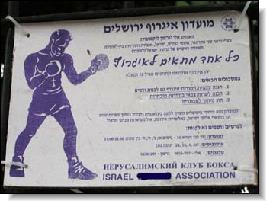
2. Then try to anticipate
what the text could or should logically be saying—given that context.
3. Finally: Confirm! Does the sentence
support your hunch?
2.21.1
דיקְלוּם
Read the following summary of a dialog. Print out the page.
When you reach a blank, stop. Try to anticipate the word that
could or should be there and write it in. When finished,
listen to the dialogue to check your answers.
![]()
לחְשוב וְאז לִקְרוא
דפְנה וְרינה חבֵרות. הֵן תלְמידות ב_______.
גם דוד לתְמיד. הוּא תלְמיד חד_____ הוּא
יודֵעַ קְצת עִבְרית.
הוּא אמר לְרינה—"רינה, אני למדְתי לִקְרוא______"
הוּא גם
אמר לְרינה שֶהוּא כתב ______ לְאבּא וְאִמא.
רינה שאלה אֶת דוד, "אֵיפׂה ההורים שֶ____? דוד אמר"
שֶהֵם ב_____, ב_______.
100.00 %
2.21.2
עֲנֵי על השְאֵלות
1. Find and copy the words that express the following: 113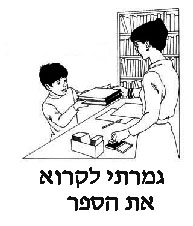
a. David's knowledge of Hebrew.
b. What is the relationship between Dafna and Rina?
c. How did Rina learn about David's parents?
2. How many verbs are there in this exercise? Copy them.
3. What is the meaning of ל in the word לְרינה ?
4. In the words שֶהוּא and שֶהֵם can you guess the meanng of שֶ?
